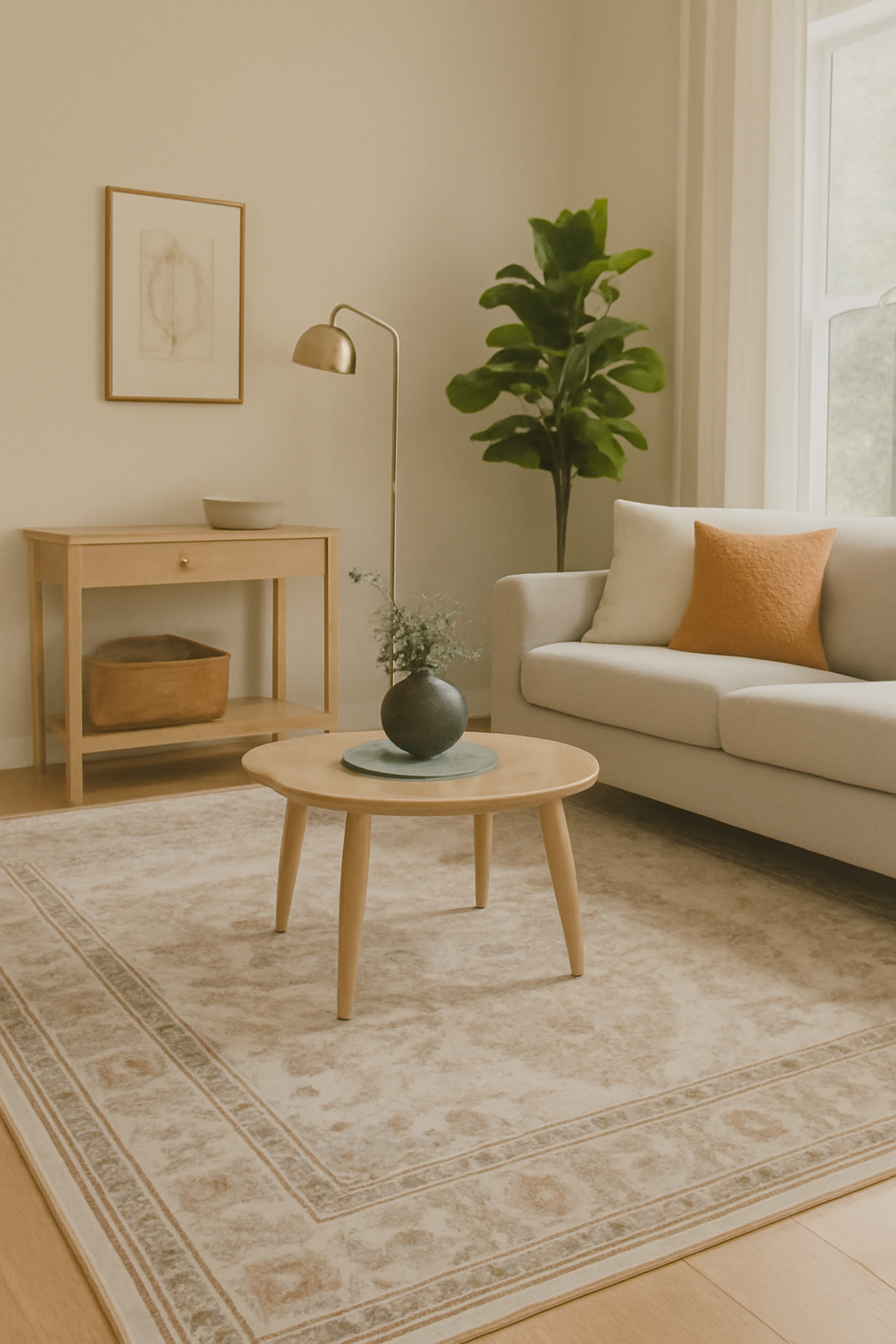A well-chosen area rug can completely transform a room, adding warmth, comfort, color, and definition to your space. But choosing the right rug isn’t always easy—it involves considering the size, material, color, placement, and even lifestyle factors. Whether you’re decorating your living room, bedroom, kitchen, or hallway, this guide will help you choose the perfect rug for every space in your home.
Understand the Purpose of the Rug in Each Room
Before you buy, think about why you need a rug in that specific room. Each space in your home has different functional and aesthetic needs.
- Living Room: Rugs can help define seating areas, add comfort underfoot, and tie the design together.
- Bedroom: Adds softness when you step out of bed and creates a cozy ambiance.
- Dining Room: Protects flooring and adds elegance—but needs to withstand spills.
- Entryway: Makes a strong first impression and traps dirt from shoes.
- Kitchen: Provides comfort for long periods standing at the counter and protects the floor.
Get the Size Right
One of the most common mistakes people make is choosing a rug that’s too small. A rug should ground the space—not float awkwardly in the middle.
- Living Room: At least the front legs of all furniture should sit on the rug. In larger rooms, opt for a rug that fits completely under your furniture.
- Bedroom: Ideally, your rug should extend 18–24 inches around the bed. You can also use runners on each side.
- Dining Room: Choose a rug that’s at least 24 inches wider on all sides than your table, so chairs remain on the rug even when pulled out.
- Hallways & Entryways: Runners should be long enough to fill the space but leave a few inches on each side.
Choose the Right Material for the Room’s Function
Different rooms call for different materials based on traffic levels and how easy they are to clean.
- Wool: Durable, soft, and ideal for high-traffic areas like living rooms or bedrooms.
- Cotton: Budget-friendly and easy to clean—great for casual areas.
- Synthetic (like polypropylene): Stain-resistant and perfect for homes with kids or pets.
- Jute or Sisal: Adds natural texture but can be rough underfoot—best for low-traffic areas.
- Silk or Viscose: Luxurious and delicate—best used in low-traffic, formal areas.
Consider Color and Pattern
A rug can serve as a bold statement or a subtle backdrop. Consider the existing color scheme and design of your room.
- Neutral Rugs: Versatile and timeless, they blend well and allow furniture to stand out.
- Bold Colors: Make a room feel energetic or dramatic—great for contemporary or eclectic styles.
- Patterns: Help hide dirt and wear, and can make a room feel more dynamic.
- Solid Rugs: Provide a clean and cohesive look, especially in rooms with a lot of visual activity.
Match the Rug Style to Your Decor
The rug should enhance your current decor style rather than clash with it.
- Modern: Geometric designs, abstract prints, or solid bold colors.
- Traditional: Persian or Oriental patterns with rich tones.
- Boho: Layered rugs, bright colors, and tribal prints.
- Scandinavian: Minimalist, neutral rugs with texture or subtle lines.
- Farmhouse: Braided rugs, checkered patterns, or distressed vintage styles.
Don’t Forget Rug Pads
Rug pads are an often-overlooked accessory, but they make a big difference. They prevent slipping, add comfort, and extend the life of your rug.
Choose a pad that’s:
- Slightly smaller than the rug (about 1–2 inches shorter on each side)
- Suitable for your floor type (some pads can damage hardwood)
- Thick enough to add cushioning but not so thick that it becomes a tripping hazard
Think About Lifestyle and Maintenance
If you have pets, kids, or heavy foot traffic, go for rugs that are easy to clean and durable.
- Machine-washable rugs are a game-changer for messy households.
- Low-pile rugs are easier to vacuum and maintain.
- Dark colors and patterns hide stains better than light colors.
Vacuum your rug regularly, spot-clean spills as soon as they happen, and rotate it every few months to even out wear.
Layering Rugs for Extra Style
Layering rugs is a great way to add texture and depth to a space. It’s especially useful when your favorite rug is too small—place it over a larger, neutral rug for a stylish effect.
Tips for layering:
- Make sure the bottom rug is at least a foot larger on all sides.
- Choose contrasting textures (e.g., jute base with a soft wool top).
- Use layering to define spaces within an open-plan room.
Budget Considerations
While it’s tempting to go for the cheapest option, remember that a good rug is an investment. Higher-quality rugs often last longer and look better over time.
If you’re decorating on a budget:
- Shop during sales or look for secondhand rugs.
- Try rug outlets or online marketplaces.
- Focus on one statement rug and keep the rest of your decor simple.
Final Touch: Try Before You Buy (If Possible)
Many retailers now offer free returns or virtual try-ons using AR apps. Take advantage of these features to visualize how the rug will look in your room before making a final decision.
Make Your Space Feel Complete
The right area rug can truly anchor a room and bring everything together. Whether you’re going for cozy, chic, or bold, your rug should reflect the mood and functionality of the space it’s in. Don’t rush—take your time to find the one that feels just right.
